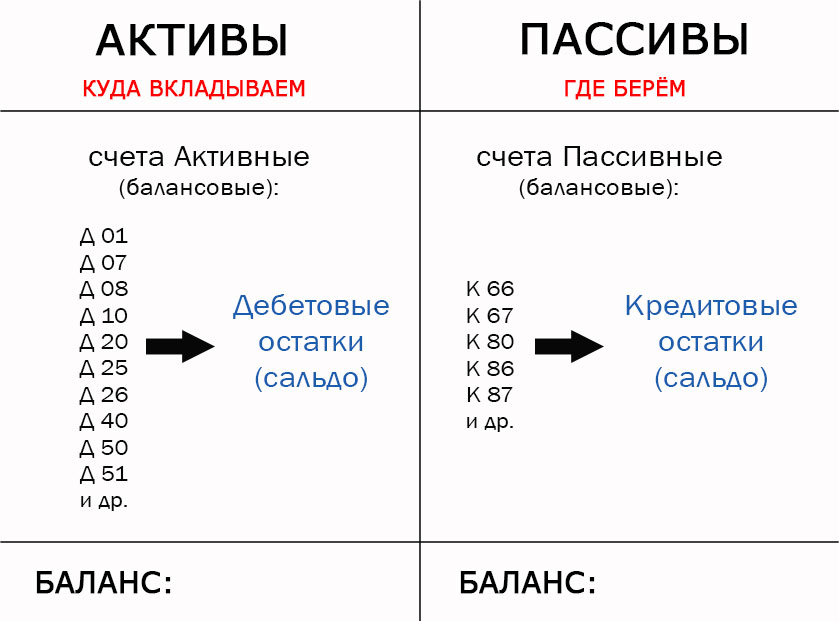We should immediately note that this concept is an accounting airplane, it has an indirect meaning in accounting. That is, it is used to a greater extent by novice accountants to understand the order of business operations in the correspondence of accounting accounts.
Let's reveal the essence of the "airplane" based on the form balance sheet and the regularity that it it carries in itself.
All balance sheet accounts (those that participate in the construction of the balance sheet) are divided into two groups: active (where funds are placed) and passive (where these funds came from). Each account, both active and passive, has two sides of its accounting - Debit and Credit. These two sides can be considered as two opposite "wings" of the same account. In fact, such an accounting form is called in accounting circles – «airplane ».

We will not go into details of what a Debit is and what a Credit is. Let's note one important thing.
Debit is the accounting basis of active accounts, and credit is the basis of passive accounts.
That is, the amounts that are displayed in the balance on the active side are Debits of all active accounts, and on the passive side are Credits of all passive accounts. And more specifically, these are debit balances (or balances) (active accounts) and credit balances (or balances) (passive accounts).

For example, we will display an economic operation using an accounting airplane.
The organization took a short-term loan from the bank (1 000 rubles) and placed this money on its current account.
The accounting transaction will look like this:
K66 D51
I feel passive and active account in correspondence.
What it means:
Account 66 is a passive account (the source is a bank loan, i.e. where the money came from).
For passive accounts, the receipt is always displayed by Credit, and the write-off by Debit. Therefore, they have a credit balance.

Account 51 is an active account (the direction of the settlement account, i.e. where the money came from).
For active accounts, the receipt is always displayed by Debit, and the write-off by Credit. Therefore, they have a debit balance.
The airplane of this account:

In general, the posting in the correspondence of the two accounts looks like this:

Now let's assume that the organization bought raw materials and paid for it 1 000 rubles from the settlement account. The accounting transaction will look like this:
K51 D10
I feel active accounts in correspondence.
That is, what happened:

Money has been withdrawn from the settlement account (we have been debited, i.e. we are crediting 51 accounts) and raw materials (material) have arrived for the same amount (we are making a receipt, i.e. we debit 10 accounts).
This is the principle by which all accounting correspondence is built, as well as using other accounts.
We think that from a simple example it is clear what the value of an accounting airplane is in the correspondence of accounts and for what it can be applied. The answer is simply for the sake of clarity of the posting of a business transaction, which is sometimes difficult for novice accountants to understand.
Accounting airplane - how to understand it? - Something like that!


































